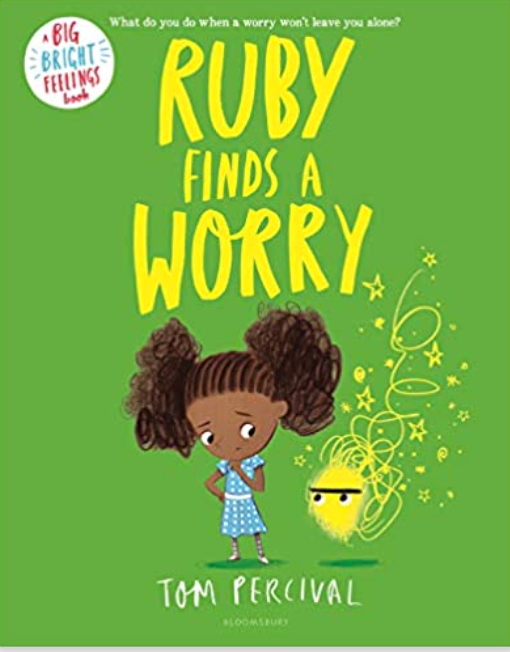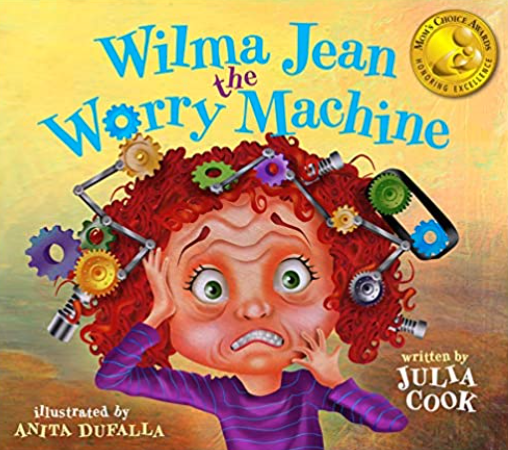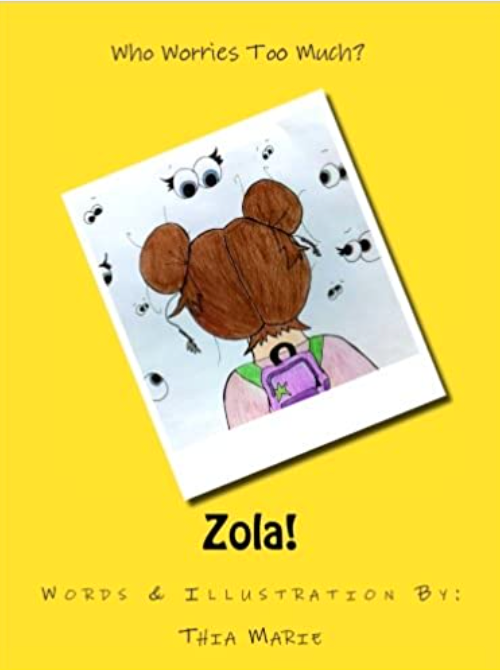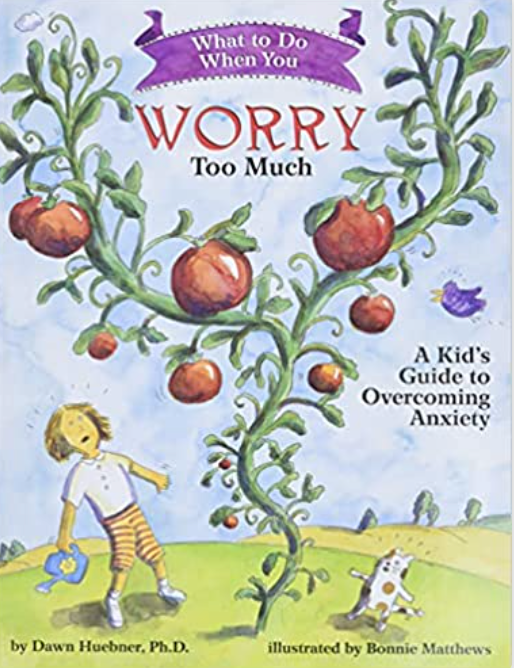Ask the Experts: Ways to Help Children Cope with Anxiety
By Kaitlin Van Acker
There has been a major increase of anxiety in children since the pandemic, when the world around them suddenly didn’t feel like a “safe place”. As adults facing our own worries, health, career, livelihood, the added pressure of needing to analyze every social decision trickled down to our children.
Why people have anxiety is best addressed in this article: The Reason
“Anxiety is like our brain’s security system, built to protect us from danger. Any real or perceived threat triggers our internal alarm system, leading to a stress response. It’s a normal and necessary human emotion that everybody experiences from time to time. ”
How Can I Support My Anxious Child?
Talk about anxiety with your child
Define anxiety: Anxiety is a thought or worry that something might happen, but often doesn’t. Children need to know they are not alone in their worries or different.
Adults can normalize with a child that “We all have worries! Big worries, small worries, helpful worries (that alert us of a saber-toothed tiger in primitive times for example) and not so helpful worries! Our not so helpful worries sometimes get in the way of doing the things we want!”
A Helpful Script:
Validate the worry - “I hear you feel nervous to try a new dance class for the first time and you want me to do the class with you! That’s normal!” (Try not to dismiss their fear or tell them to calm down or say “you’ll be fine”. Try not to get frustrated with their worries, because it may make the moment more tense. Lastly, avoid giving in to the worry and leaving the class immediately if they feel nervous.
Set limit - “This dance class for children only and parents are not allowed in the class. I will be sitting on the side for the first class, then I will move away to sitting in my car the next class. What do you think would help make that worried feeling smaller today?”
Walking in with a friend or buddy?
Asking for a hug from the coach when there is a pass off from me/parent?
A special goodbye handshake we do each time that you come up with?
***Sometimes carpooling and a child going with someone else than their caregiver can help break the anxious cycle! Trial and error!
Reassure - “You’ve got this! I believe in you and I know you can do it!”
Model Anxiety and Good Coping Skills as Parents: Parents don’t have to be perfect or free of anxiety. As parents, one way we can help children cope with anxiety is to role model feeling worried ourselves. We might say “I feel nervous about this big presentation I have at work. I can feel my heart beating fast like a cheetah and the palms of my hands are getting sweaty. It’s scary for me to talk in front of a big group! (Sigh) I’m going to take a deep breath and find my brave feeling. Practicing what I am going to say in front of the mirror will help me! I can do hard things.”
Children also love when parents tell them a story about themself as a child. A parent might share about a time when they were a child and had a big worry (e.g. being afraid of the dark at bedtime) and how they overcame it (e.g. my dad and I would check for the bear I was scared of in my closet with a flashlight every night like cave explorers and we both wouldn’t see anything”)! This is a form of reality testing :)
Tangible Ways to Support Your Child
Create a Worry Monster:
Name it to Tame it - Externalize worry by making it into a worry monster so it’s not the child with the worries.
Step 1 - Give the worry monster a name (silly even better!?)
Step 2 - Brainstorm and Describe it:
“What color is it?”
“What does it smell like?”
“What does it say to you?”
“What can you say back to it to quiet it?”
“Where is it on your body?”
Step 3 - Child Makes Worry Monster:
Child draw worry monster
Or make it out of model magic or clay
Step 4 - Talk back to it:
When a child hears the worry monster talking worries in their mind, invite them to close their eyes and shrink it by talking back to it! This gives children a sense of power over their worries. It also helps children challenge negative thinking and negative self-talk. And replace that with positive self-talk! For example, “Take a hike or go away Worry Monster, I am strong and I can do this!”
Read Books on anxiety:
This is another safe way to invite a discussion about anxiety and normalize it with your child.
3-5 Year Olds
5-8 Year Olds
What to do when you worry too much
Coping Toolbox and Other Calm Down Strategies
An adult can carve out a special time to make the toolbox with their child’s favorite strategies or purchase on Etsy
Other calm down strategies that children could put on binder ring with hole punched index card to place in a cool down toolbox or basket:
give yourself a butterfly hug
Lay down and do a body scan or guided meditation
relaxing tight muscles in arms and hands
counting to 10
squeezing a stress ball
kneading clay
visualizing a peaceful place
rubbing a smooth stone
listening to favorite music
writing in a journal
drawing in a sketchbook
snuggle a comfort object
Practice yoga with yoga cards
Make a glitter or calm down jar
A glitter jar can help kids control their feelings and promote calm in those worried moments. It is easy and fun to make! The idea is that our thoughts and fears get all jumbled up! The glitter bottle is a visual of this! This could go in a coping toolbox or calm down basket (along with index cards of strategies, DIY stress ball, breathing cards, comfort object, journal).
The act of shaking and watching the contents of a calm down jar settle forces the body to focus, which in turn allows children to organize their thoughts and ‘center’ their nervous system. The idea is that, as the items within the calm down jar fall, so will your child’s heart rate and rapid breathing, allowing him or her to gain control over his or her emotions. @marakilane
Invite them to notice the calm feeling moving through their body as they breathe. Perhaps their feet feel heavy and warm, and that feeling is moving up towards their shoulders. As they breathe, ask them to notice how their heartbeat feels steady and their body temperature feels just right. All the while breathing in…and out. As the glitter settles and the water clears, so will their thoughts, feelings, and body.”
means “feeling” in Japanese
Small feeling pillows that build emotional vocabulary and normalizing feelings in children
Characters
Lovey or Bug - characters with a story of worries or fears who tuck their feelings in their pouch. The child can place the “brave” feeling pillow under their character’s wing. For younger children, externalizing their worries through a stuffed animal can invite discussion in a more indirect way.
Prompts / Exercises / Games
We ALL have lots of feelings. We have feelings that we like to have and don’t like to have (e.g. scared, nervous). Some feel good in our bodies. Some don’t feel so good in our bodies. They are all normal!
Some ways to work with them:
Place the feeling pillows in a basket on the shelf next to their work
Place the basket of Kimochi’s on the dinner table and pull out while discussing day, or use at bedtime, or a private quiet moment
“Pick a Feeling You Had This Week:” Invite the child to tell a story about a time they had that feeling they chose. The child can sequence events using the other feelings and lay them out in a line to see triggers (.e.g first I felt SHY at the birthday party and NERVOUS, then SCARED). This can also build language in younger children.
Additional Resources for Parents
Game
Books for Adults
Podcasts - both local
Local Kids Yoga Classes in Marin County, CA or online
Metta Yoga - a parent can attend a class with their child, form a private pod with friends, and expose your children to the benefits of yoga from a young age.
Kaitlin Van Acker is a Licensed Marriage, Family, and Child Therapist trained in the Cognitive Behavioral Therapy approach. Through a career as an Elementary School Counselor and a private practice, Kaitlin worked with a wide range of children and families. She ran “Courage Groups” for children with OCD and worked with parents of children who suffered from anxiety. Kaitlin combined art therapy with the CBT approach. She currently resides in Marin County with her husband and three young children who attend an AMI Montessori school.








